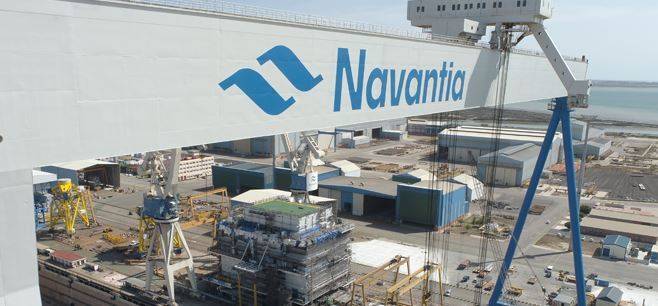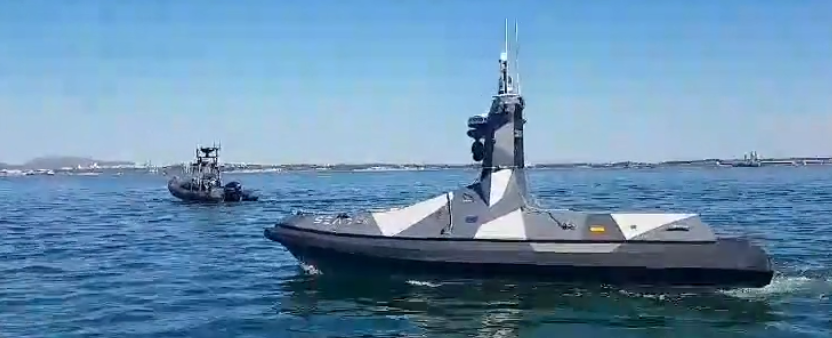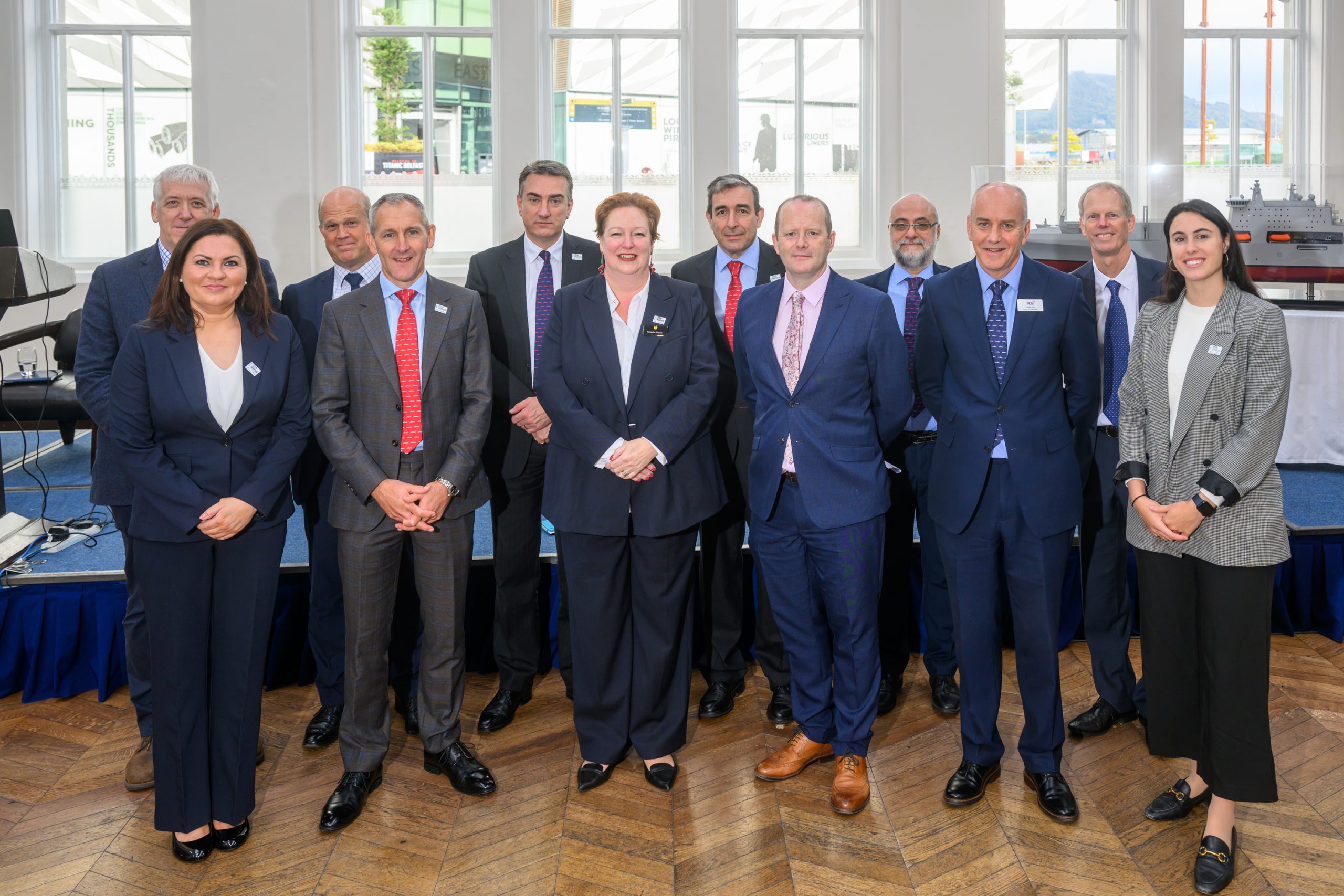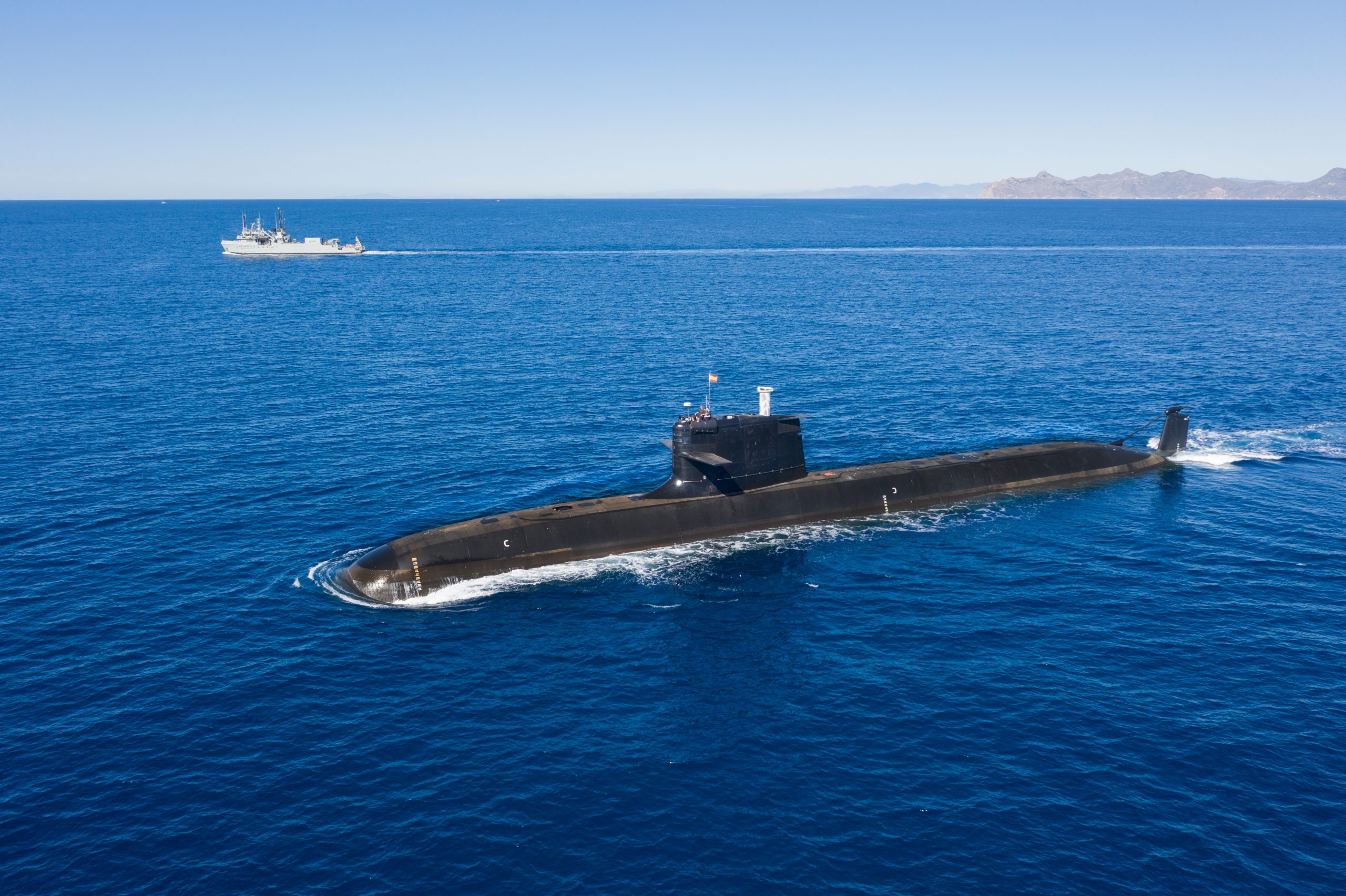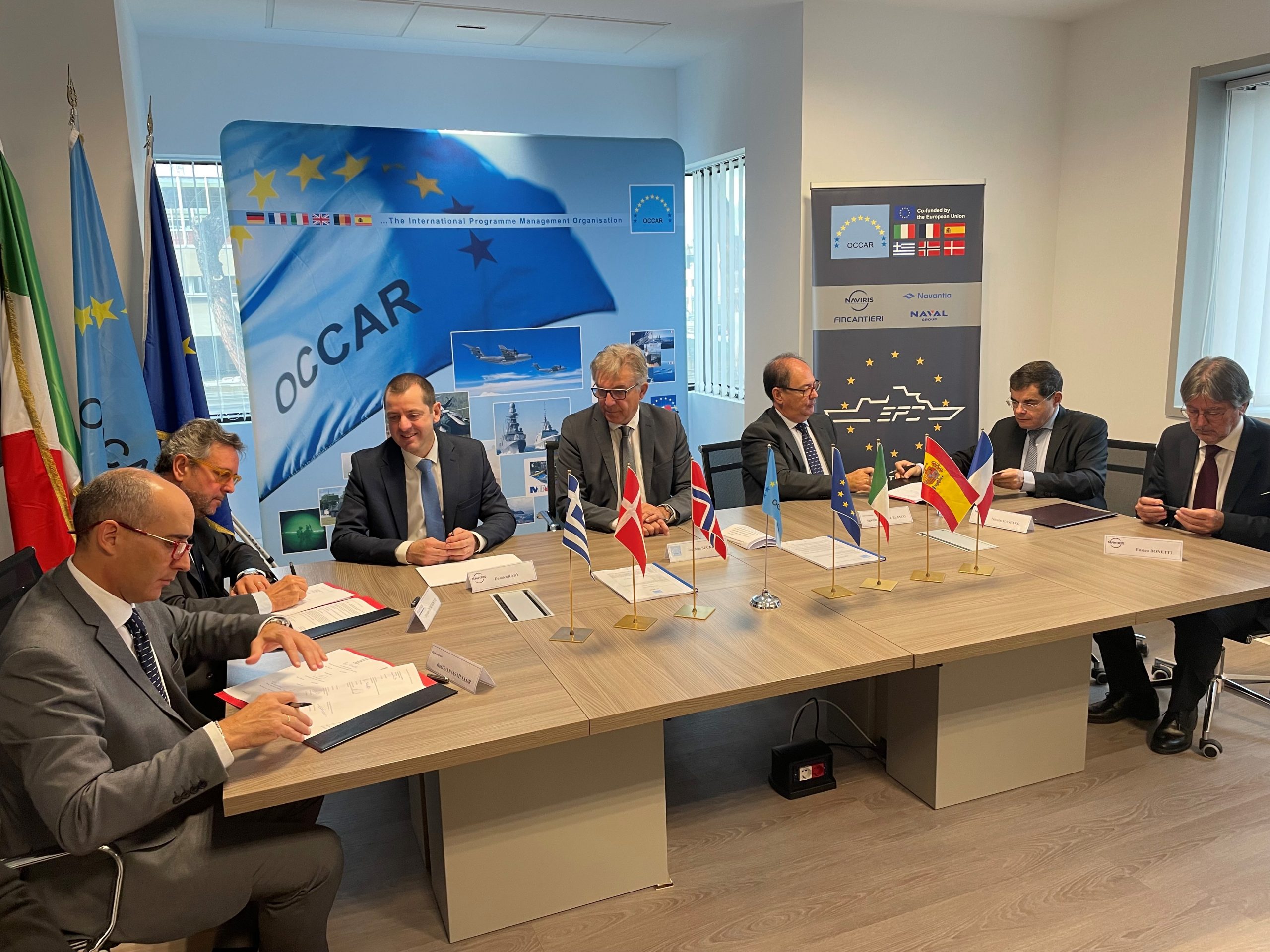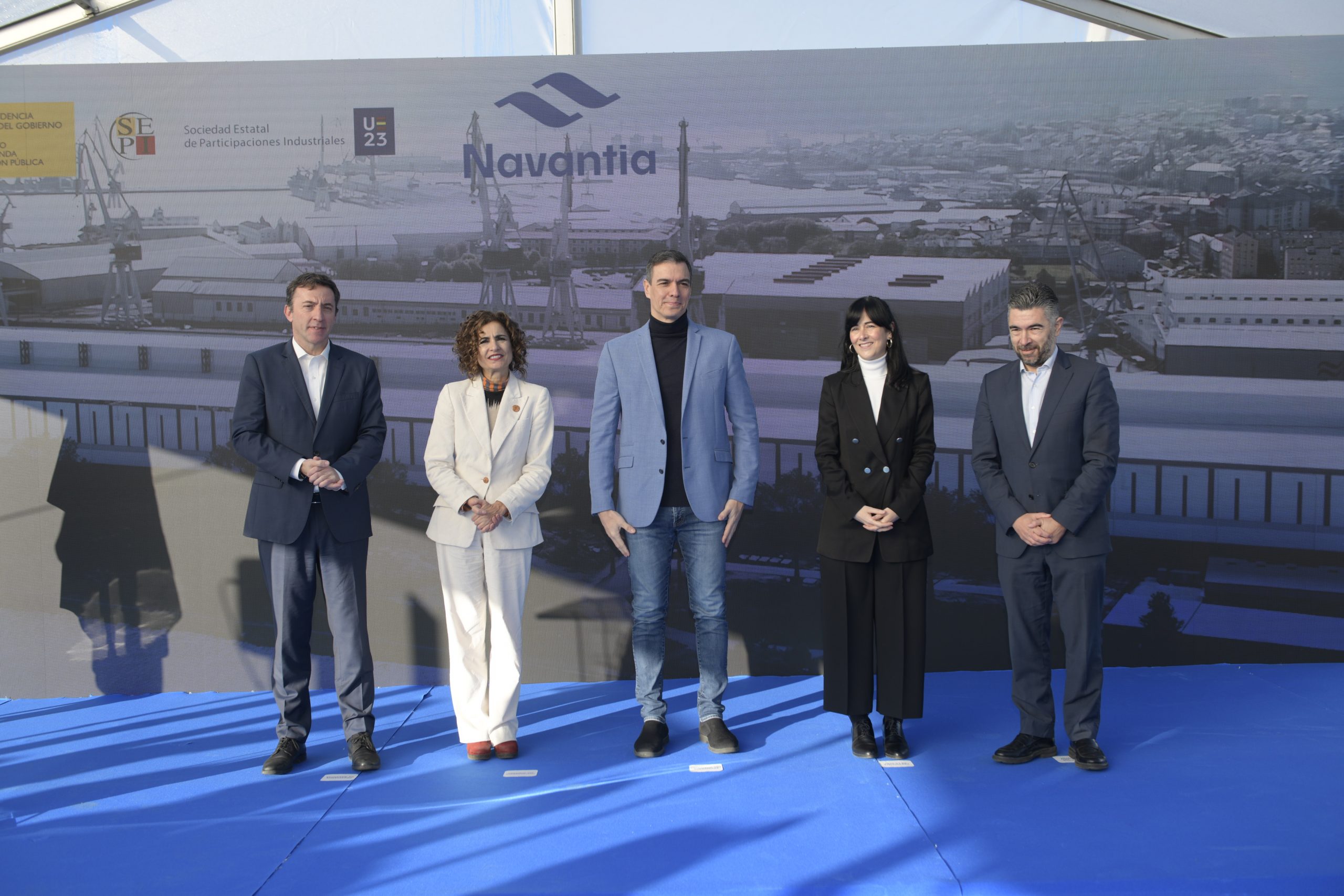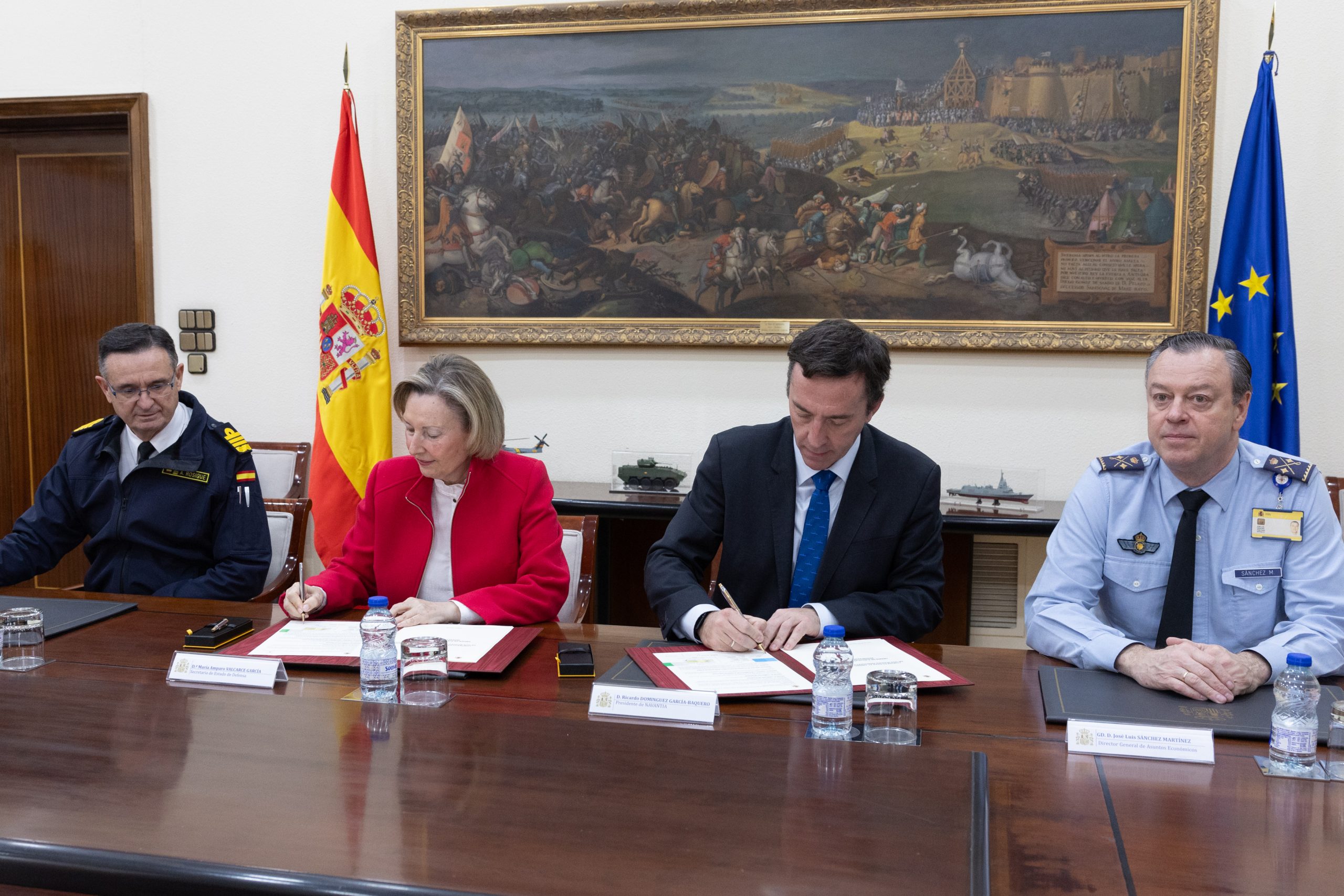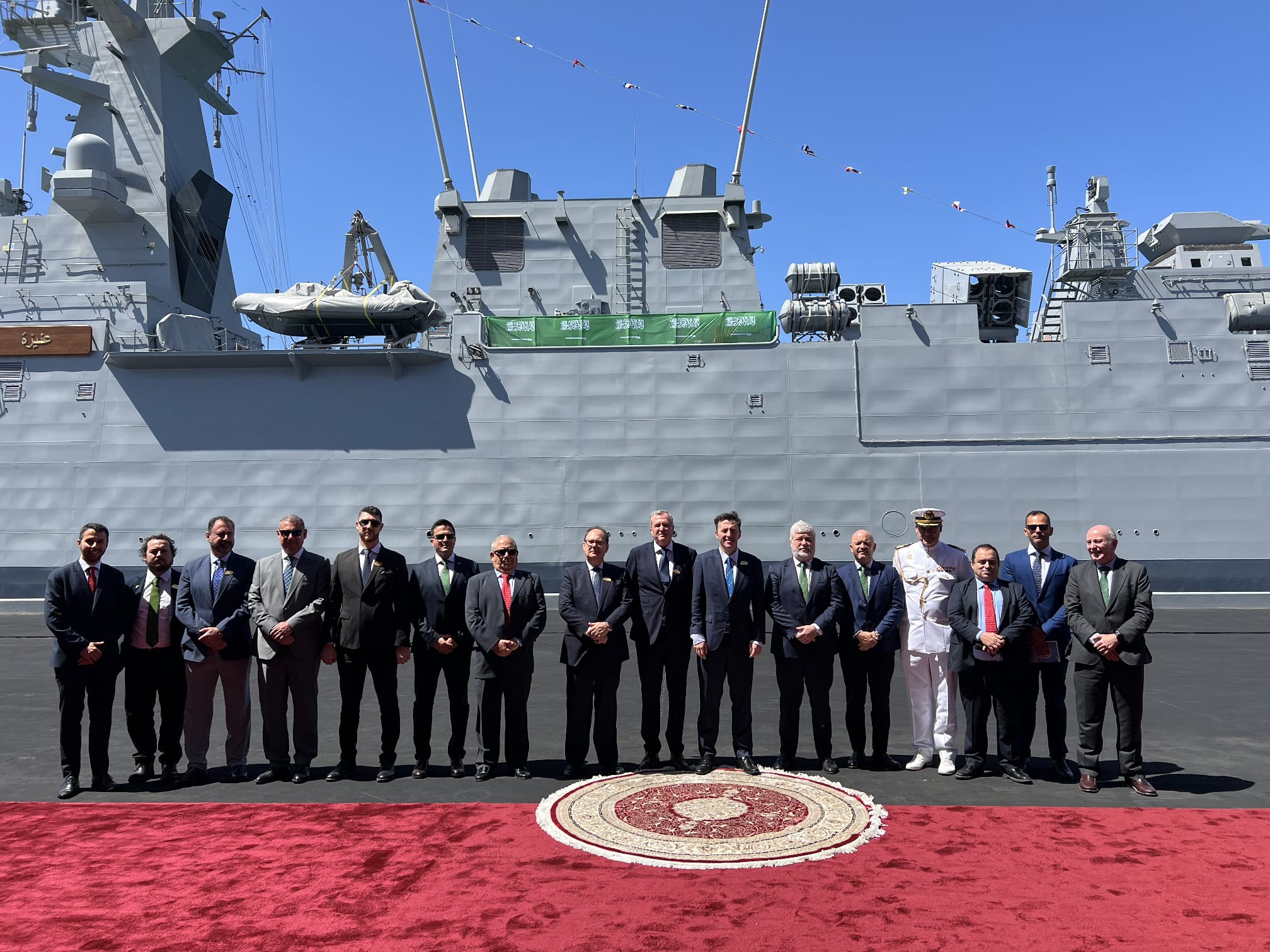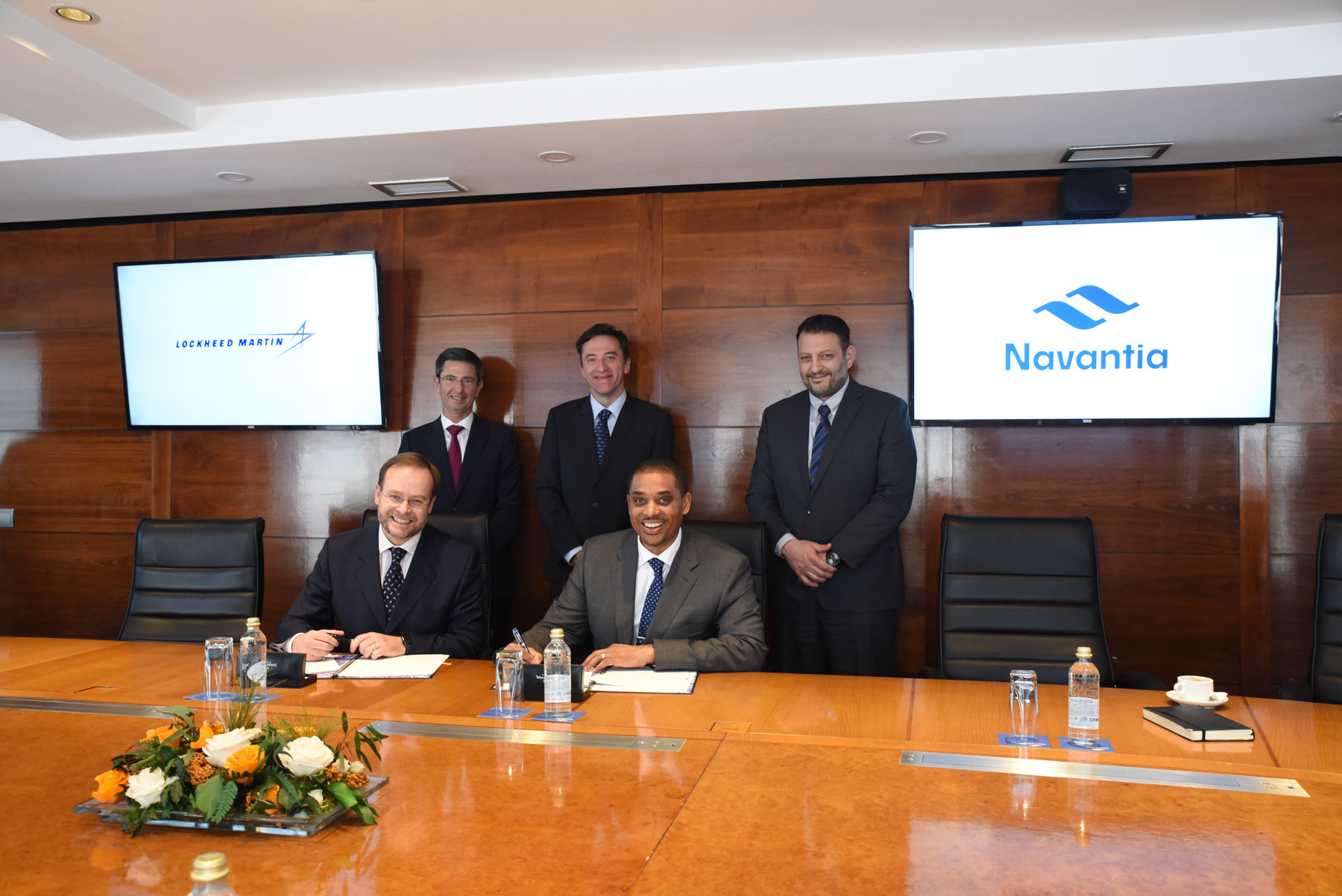Navantia commissions the fifth corvette built in Bahía de Cádiz to the Royal Navy of Saudi Arabia in Jeddah
On behalf of His Royal Highness Minister of Defence Princ Khaled Bin Salman, The Chief of Staff, General Fayyad bin Hamed al Ruwaili, and the Chief of Staff of Royal Saudi Naval Forces, Admiral Fahad Bin Abdullah Al-Ghofaily, have presided today the commissioning of the fifth corvette, built at Navantia’s Bay of Cádiz shipyard, to the Royal Saudi Naval Forces (RSNF). In accordance with the terms of the contract, the handover took place at the King Faisal naval base in Jeddah.
In this special occasion, His Excellency Chief of Staff of Royal Saudi Naval Forces, Vice Admiral Fahad Bin Abdullah Al-Ghofaily delivered his speech indicating that HMS UNAYZAH is the fifth and last corvette of Al-Sarawat project to be delivered. HMS UNAYZAH, as the rest of her class, was built to be one of the world’s most technologically advanced and powerful corvette to meet National mandates in realization of Saudi vision 2030, possessing distinctive capabilities to handle multi-combat missions with high efficiency to enhance the combat readiness of the RSNF, to defend the strategic and vital interests of the Kingdom, and to maintain maritime security in the region.
His Excellency also indicated that the localization of defense capabilities development and integration carried out onboard HMS UNAYZAH in the Kingdom of Saudi Arabia by the role of Saudi Arabian Military Industry (SAMI) in Alsarawat project, as well as, the successful accomplishment of extensive combat systems trials and live firings carried out in KSA, has heavily contributed to achieve one of Ministry of Defense’s strategy to localize more than 50% of the total military expenditure by 2030 aligning with Kingdom’s Vision.
In honor of this special occasion, His excellency Vice Admiral Al-Ghofaily expresses his utmost gratitude and appreciation to His Majesty the Custodian of the Two Holy Mosques King Salman bin Abdulaziz, His Royal Highness Prince Mohammed bin Salman, Crown Prince and Prime Minister, and His Royal Highness Prince Khalid bin Salman, Minister of Defense, God bless them all, for the endless support, care, and attention they always give to the Royal Saudi Naval Forces.
Having concluded his speech, His Excellency has attributed a great deal of Alsarawat program’s success to Navantia commitment and expressed his gratitude to Mr. Ricardo Dominguez, the Chairman of Navantia, for the company’s exceptional achievements.
The corvette, named HMS UNAYZAH (C550), was transported to Jeddah on a specialised vessel and there underwent the final construction and systems integration works, confirming the technology transfer (ToT) and production localisation capability of Navantia to the SAMINavantia joint venture.
The ceremony was attended by the Deputy Minister of Defence, Dr. Albiyari; the President of Navantia, Mr. Ricardo Domínguez. Also in attendance were the the Undersecretary of Procurement, Ibrahim Alsuwayed; the CEO of SAMI, Walid Abukhaled; the CEO of SAMINavantia, Sofía Honrubia.
AVANTE 2200 PROGRAMME
The corvette HMS UNAYZAH has a length of 104 meters, a beam of 14 and seating for a total of 102 people between crew and passengers. The contract for the construction of five corvettes entered into force in November 2018 and, since the launch of the first unit (July 2020), Navantia has already launched the five units with a period of four months between each one of them, which means achieving this milestone in a record time of three years. Deliveries are taking place after just over three years from the cutting of the first plate of each ship.
The corvettes are based on the AVANTE 2200 design, adapted to the requirements of the RSNF, offering advanced performance, excellent work at sea, high survivability, and ability to operate in extreme temperatures.
Concurrently, around 700 crew members, engineers, and maintainers of these corvettes are completing the education and training process at the Navantia Training Center (NTC) in San Fernando.
In addition to the corvette contract, Navantia agreed with SAMI (Saudi Arabian Military Industries) to create a joint venture in Saudi Arabia, an alliance that allows Navantia to position its integrated systems and technologically advanced solutions in the Arab market and area of influence and is aligned with the company’s internationalization strategy.
The contract assumes a global workload of around seven million hours and 6,000 jobs over five years. Of these, more than 1,100 are direct employees, more than 1,800 collaborating industry employees (more than a hundred companies participate at the programme) and more than 3,000 indirect employees generated by other suppliers.
The program includes, in addition to construction, the Life Cycle Support for five years from the delivery of the first ship, with an option for another five additional years, the last ship of which must be delivered in 2024.
It also includes the provision of various services, such as integrated logistics support, operational and maintenance training, provision of Education and Training Centres for the Combat System and Platform Control System of ships, Life Cycle Support, and ship maintenance systems at the Jeddah Naval Base.
On behalf of His Royal Highness Minister of Defence Princ Khaled Bin Salman, The Chief of Staff, General Fayyad bin Hamed al Ruwaili, and the Chief of Staff of Royal Saudi Naval Forces, Admiral Fahad Bin Abdullah Al-Ghofaily, have presided today the commissioning of the fifth corvette, built at...

www.navantia.es
 www.navantia.es
www.navantia.es





